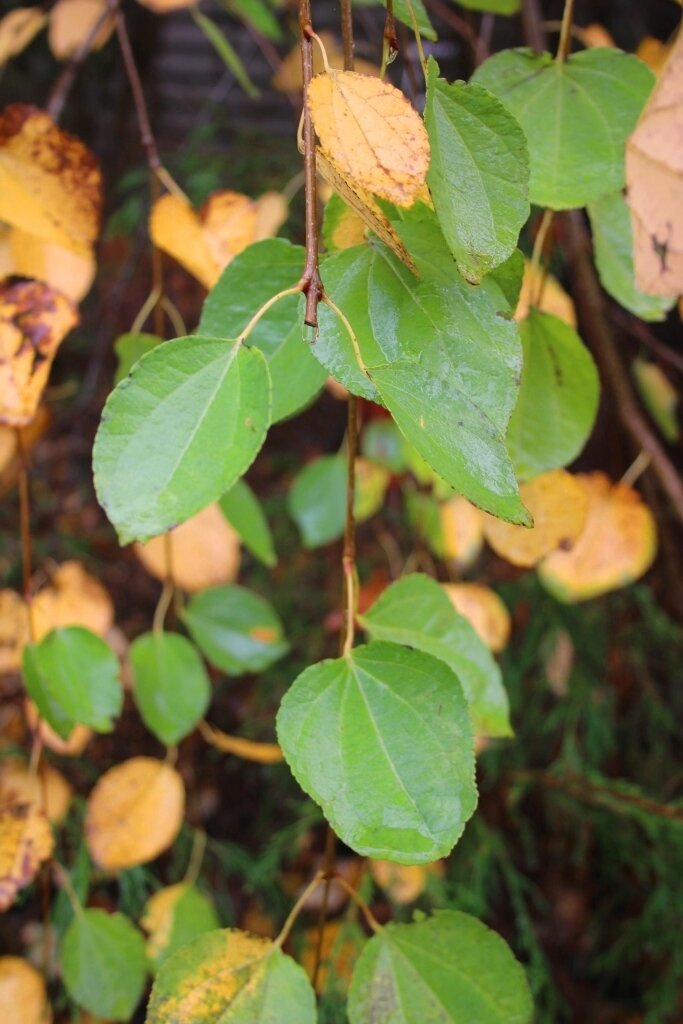Black Gum, Black Tupelo, or simply Tupleo, Nyssa sylvatica (pronounced NISS·uh sil·VAT-uh·kuh) sets the autumn woods on fire with its gorgeous red leaf color. Summer leaves are shiny, dark green. This deciduous native is a slow-growing tree for full sun to part shade. Mature specimens average 30 feet, but occasionally a tree in ideal conditions will reach 80 feet tall. They grow in zones 3-9, in almost any acidic soil, and tolerate occasional flooding or drought. Trees are fire resistant.
Tupleo is a powerhouse for wildlife, providing flower nectar for bees in the summer, followed by blue berries for birds and mammals. Not every tree is loaded with fruit. Tupleos are unusual in that some trees have male flowers, some have female flowers, and some have both. Flowers are insignificant. With maturity, the bark forms into blocks similar to Pine, creating small cavities that offer protection for frogs, bats, lizards, and insects. Deer may nibble young growth but tend to leave mature specimens alone.
Tupelo trees form a deep taproot, and should be transplanted when young. ‘Red Rage’ is a cultivar with exceptional red color. It is resistant to the leaf spot that troubles some trees. ‘Zydeco Twist’ has attractively contorted limbs. ‘Sheri’s Cloud’ has variegated foliage.
The shiny green leaves of Nyssa sylvatica give way to brilliant red fall foliage. Trees thrive in a woodland setting, like the one seen here.










